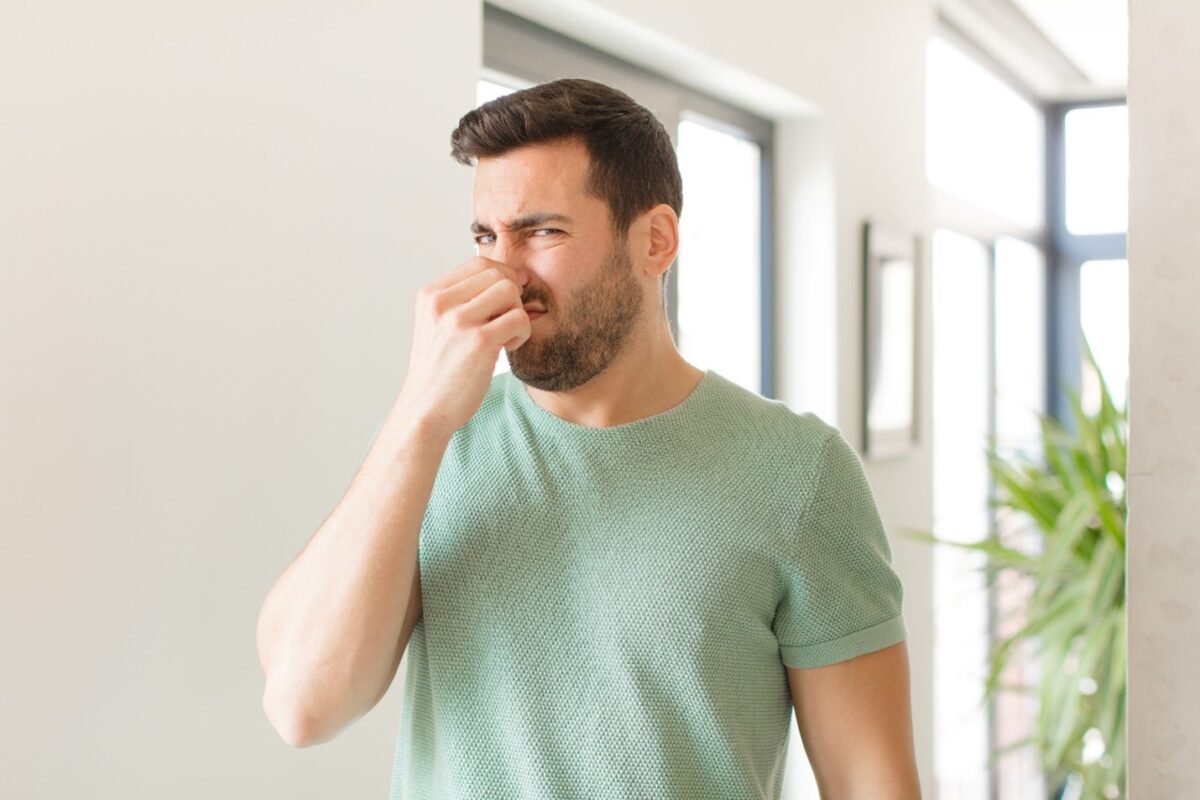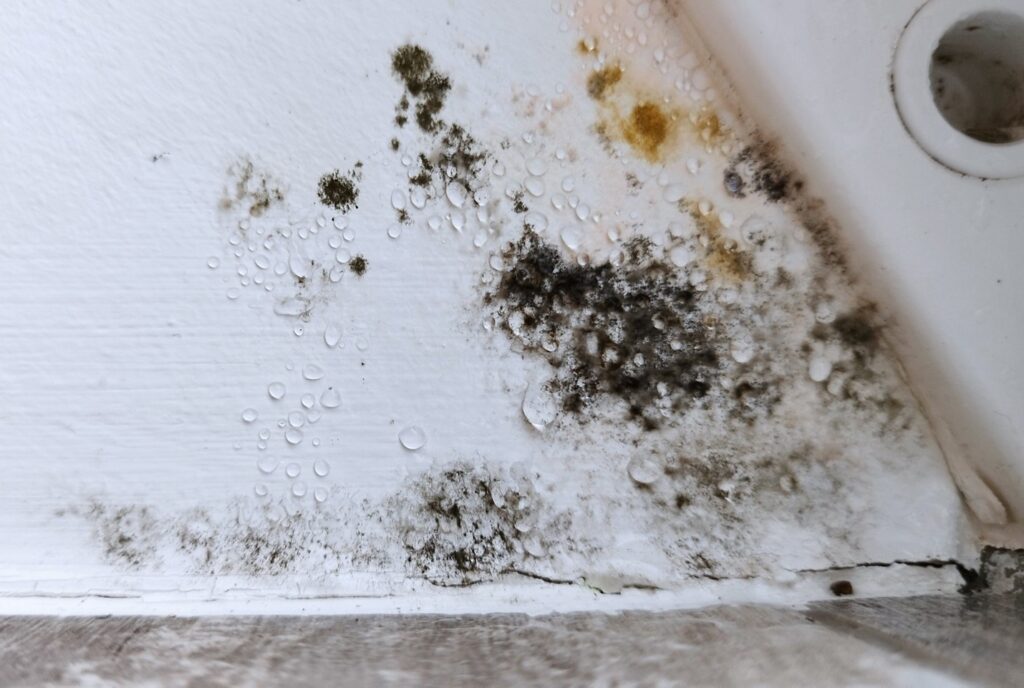
July 14, 2024
How to Get Musty Smells Out of Your House
No matter how clean your home appears, a musty smell can leave a bad impression. These smells are usually caused by minor issues and can be eliminated with simple fixes, whether it involves throwing out rotten food or picking up damp towels from the bathroom. But occasionally, the problem is a bit bigger.
If you’re dealing with a musty or moldy smell in your home, address it sooner rather than later. Here, we’ll talk about how to find and eliminate the odors from your space so you can go back to enjoying your home without covering your nose.
What Causes Musty Smells?
When you first smell something musty in your home, it can be hard to pinpoint where it’s coming from. So, it’s important to understand what causes those unpleasant odors.
Musty smells are often caused by mold, which grows in damp, cold places. When mold starts to grow, it produces spores. These spores can be disbursed throughout your home in the air, carrying the signature musty mildew smell.
Mold can commonly grow in refrigerators, around leaking pipes, in and around basements, and on absorbent surfaces. On some surfaces, the presence of mold is obvious. You might see white fuzz growing on old produce in the fridge, for example. If mold is on a surface, it often appears in dark patches. You might see these in your basement or other damp and dark areas around your home.
If you have pets, they can bring in musty smells, too. Pet hair and dander can spread throughout your home, so try to dust and sweep regularly. Dry your pet thoroughly after a bath or if they get wet while outside, and launder their bed regularly as well.
How to Find the Source of a Musty Smell
Your nose might not be enough to help you pinpoint mold in your home. To find the source, first check the rooms in your home that are high in humidity, such as the bathrooms and the kitchen.
In the bathroom, look in the shower or tub as well as in the toilet and sink. Check under the sink to make sure there are no leaks encouraging mold growth. If there are wet towels or bath mats lying around, wash and dry them thoroughly. Clean up any water on the floors, walls, or counters. Keep this area well ventilated to reduce future mold growth.
Moving into the kitchen, take care of areas that get exposed to water regularly, such as the sink and countertops. Look in the fridge and freezer for expired food and dispose of it right away. You might already have a natural deodorizer like baking soda or white vinegar in your home. If so, use them to clean mold-infected areas and absorb bad odors.
Poorly ventilated and dark areas like closets and doorways are often breeding grounds for mold. If you do find mold in these areas, take care to keep the space well-ventilated in the future. Decluttering your closet can help with air flow, and creating effective seals for outside doors can help keep moisture out.
Finally, if you have a basement, check for water spots or leaky pipes. Basements are typically quite dark, so even a small amount of moisture can be enough for mold to grow. Other places you may want to check for mold can include chimneys, carpets, windowsills, washing machines and dishwashers, and even upholstered furniture.

Mold’s Impact on Your Health
Mold in your home can do more than make you wrinkle your nose. In some cases, mold left untreated can lead to some serious health complications[RB1] .
Mold in the air can lead to allergy-like symptoms, such as an itchy nose, cough, and sore throat. If you’re inside more than usual (perhaps it’s the season of heat waves or snowstorms), then the mold in your home can continue to make you feel worse until it’s treated. Allergic reactions to mold may not happen right away; a delayed reaction may lead you to think your symptoms aren’t being caused by mold at all.
For some, mold exposure can be truly detrimental. Immunocompromised people may risk breathing problems and lung infections if exposed to mold too often. People with asthma could be at risk of an attack if they are around mold.
But mold doesn’t just impact your health; it can also impact your home. Mold will slowly eat away at the surface it’s growing on, which can damage your home’s structure or furnishings. Eliminating mold is key to keeping you and your family healthy as well as maintaining your space.
How to Get Rid of Musty Smells
Removing mold is the most effective way to get rid of musty smells. Clean the area with a damp cloth and dry it thoroughly. Keep an eye on the area in the future to make sure it doesn’t accumulate too much moisture, which could cause mold to grow back.
Once you find and eliminate the mold, a musty smell might still linger. Thankfully, you can take several different routes to get your home smelling fresh and clean again.
After you clean the source of the odor, apply baking soda to the affected area to absorb the smell and any lingering moisture. Let it sit for a few minutes before cleaning it up. Alternatively, if the odor came from a trash can or fridge bin, you can add baking soda and follow it with hot water. Once it sits for a few minutes, the odor should be greatly reduced, if not eliminated completely.
Is there a problem area in your home where mold seems to keep coming back? Antifungal cleaners can kill mold and prevent it from regrowing. These cleaners are commonly found in home improvement stores or at your local supermarket. Follow the manufacturer’s instructions during use, and protect yourself from fumes and chemicals with rubber gloves and a mask.
The easiest way to keep your home mold-free is to ensure that there’s not too much moisture. If your space is particularly humid, it may be worth it to invest in a dehumidifier to pull moisture from the air. If you can’t or don’t want to purchase a dehumidifier, you should at least open windows and doors when possible to create fresh air flow.
To keep musty smells away, consider investing in an air purifier or some air fresheners around the home. These measures can help you deal with lingering smells and make your home feel more comfortable and inviting overall. Even something as simple as regularly dusting your home’s flat surfaces and cleaning your vents can help reduce musty smells.
If you notice leaking pipes or other sources of water in the home where it shouldn’t be, work to have these issues fixed as soon as possible.
Working with White Glove Cleaner
Dealing with mold and mildew is one of the less glamorous parts of maintaining your space. Still, it’s important to keep your home or apartment clean for both your health and your enjoyment of the space. White Glove Cleaner is here to lend a hand.
White Glove Cleaner is a proud provider of top-quality cleaning services throughout New York City. Our team is fully vetted and background checked, so you can rest assured knowing you’re only working with the most dedicated professionals in the city. We can provide one-time cleaning services or return to help maintain your space on a weekly, bi-weekly, or monthly basis.
When our team comes for a regular cleaning, they will hit the most important areas of your home. Floors, countertops, sinks and faucets, and the outsides of appliances are always cleaned and left tidy. We’ll even take the trash out for you! If you need a bit more help with things like laundry or organization, we provide these services for a small fee.
White Glove Cleaner is also proud to offer specialty services such as “green” cleaning, perfect for individuals with allergies or homes with kids and pets. If you’re relocating, consider our move-in/move-out service, which completely resets your space for its next tenants or gets the area ready for you to settle in.
With so much to do and see in New York City, you shouldn’t be spending your precious free time cleaning your home. Contact the team at White Glove Cleaner today to see how we can help.
